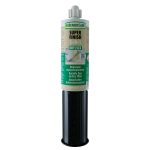Your FAQs answered by Repair Care
On this page, Repair Care provides answers to the most frequently asked questions for the use and application of our products. Should you not find the answer to your question here, do not hesitate to reach out to us via our contact page and we will try and get back to you as soon as possible.
The cost of repairs is significantly lower than replacement. The exact cost depends on several factors and our Excel spreadsheet gives a good indication of how to estimate prices. For complete assurance, our Joinery Inspection Survey provides a detailed report and accurate estimation of all costs involved in a project.
With the correct preparation and application, DRY FLEX® repairs will last for the lifetime of the substrate. The repairs will also significantly extend redecoration cycles.
Yes, our products are guaranteed for 10 years, subject to conditions.
A range of training options is available. Our short, cost effective training courses show the easiest ways to use the system and ensure that you get the best performance from it. A training DVD is also available.
Yes, since 1995 TNO in Delft (The Netherlands) has developed a research program based on practical research and evaluation to test the durability of the products used to repair windows and windowframes.
All products from Repair Care have been tested according to the TNO method. In addition, Repair Care itself has been testing with its own test station in the Austrian Alps for more than 20 years.
In Europe, the test institutes have further agreed that the test standards are mutually recognized.
Consult a painting company or maintenance company to have it inspected whether the window needs to be replaced, or whether it is possible to carry out repairs or partial replacement. 95% of the time it is possible. It is cheaper than replacing but also the durability of your window will increase significantly.
Please contact us for details of a local trained specialist or find our overview here.
All decay must be removed prior to application for the system to work properly. The moisture content of the remaining wood must be below 18%. A Repair Care Wood Condition Meter is available to check the moisture content.
As soon as the DRY FLEX® is fully cured, it can be sanded and then painted or stained. The exact curing time of DRY FLEX® depends on the size of repair, application temperature and humidity and the curing time stated on the products is for guidance only.
Yes, most paints and stains can be used over DRY FLEX®.
Yes, you can. We recommend drilling a pilot hole first, in the same way you would with timber.
DRY FLEX® should be applied in dry weather and above freezing point. (above 10 degrees for DRY FLEX® 16).
Yes, our products are guaranteed for 10 years, subject to conditions.
Details can be found on each product page.
DRY FLEX® 16 can be used up to 50mm deep in temperatures of 10-35°C. DRY FLEX® 4 can be used up to 20mm deep during warm weather (10 – 35°C) and 50mm in depth during colder weather (0-10°C). DRY FLEX® 1 is suitable for repairs up to 10mm deep. There should always be a minimum depth of 5mm to ensure full flexibility in the cured repair.
The DRY FLEX® system has been used extensively on many historic buildings. Please ask your local conservation officer to contact us if there are any queries.
Yes. Please see the guidance notes on the product data sheet.
No, it is not suitable for this type of application.
DRY SEAL™ MP should be applied carefully, without over filling the rebate. Excess is best removed from the glass with a sharp blade when it is cured.
DRY SEAL™ MP has UV resistance so can be left unpainted but painting will help protect against surface pollution.
Please refer to the guidance notes and instruction video on the product page.
Epoxy resin products are classified as skin irritants. Avoid skin contact by wearing Nitrile gloves. When appropriate wear eye protection. Full details are available on the product data sheets.
Our system repairs only the affected area rather than the whole component so less material is used, saving on disposal, raw materials and transport.
The exact curing time depends on the size of repair, application temperature and humidity and the curing time stated on the tubes is for guidance only.
Let it dry naturally. If you force the drying process, only the surface will dry for a short time and the remaining moisture will be pushed further into the wood. However, this moisture will want to get out as quickly as possible and will soon reach the surface again.
A minimum layer thickness of 5 mm is required for repairs with DRY FLEX® 1, 4, 16 and IN and BIO FLEX® ALLROUND EN COOL.
The curing of DRY FLEX® and BIO FLEX® is, due to its character (chemical curing), dependent on mass and (environmental) temperature. A larger layer thickness (more mass) or a higher temperature means a faster curing. A smaller layer thickness (less mass) or a lower temperature means a slower curing
Under the influence of sunlight (UV), epoxy will darken in time and a crackle effect may appear in the top layer. In order to ensure a durable repair, it is therefore necessary to paint the repair.
During the curing of epoxy, a waxy layer that feels greasy, the so-called amine layer, forms on the outside. This amine layer does not allow good adhesion and drying of the paint system or filler (DRY FLEX® SF). The amine layer can be easily removed by sanding the top layer.
We recommend wearing protective gloves to avoid skin contact with epoxy. Nitrile gloves are ideally suited for this purpose. Latex, vinyl, painting gloves etc. do not provide sufficient protection.
Yes, DRY FLEX® SF is a filler and can be used for natural cracks and small defects (< 6mm) in new and unpainted wood. Any raised wood fibres on the contact surface can be removed by sanding.
The cylinders must be scrape empty to belong to normal waste. The nozzle, however, always contains a small amount of unmixed product and must therefore be cut off and disposed of with small chemical waste.
Rotating parts such as windows and doors do not necessarily have to be replaced when damaged. As long as the damage is non-constructive (i.e. not at the joints), they can be repaired perfectly.
When using repair resin, a good adhesion must be created between resin and wood, because the resin is too firm to penetrate the substrate properly. In order to make a solid connection with the wooden substrate, a (liquid) epoxy adhesive primer is applied first, which will form a connection with the epoxy resin to be applied later
Since 1995 TNO in Delft has developed a research programme based on practical research and evaluation to test the shelf life and durability of the products used to repair windows and frames. All Repair Care products are tested in our own laboratory according to the TNO method. Repair Care also tests for over 20 years with its own test station in the Austrian Alps. All products are now KOMO certified and are regularly tested by SHR. Various tests are also performed by foreign research centres (IFT and TÜV).
To determine how the epoxy has started to crack, several things are important.
– Has the mixing been carried out properly and was the mixing ratio correct?
– Does the repair contain a minimum layer thickness of 5 mm everywhere (also at the edges)?
– Is the repair evenly cured without external heat sources?
– Is the repair properly built up (without air inclusion)?
If in doubt, always consult one of our specialists.
This has to do with the swelling and shrinking behaviour of the wood, which the paste cannot imitate. If the wood has been repaired properly, this will not result in damage, but is more of an aesthetic problem.
The epoxy is fully cured at the time of sanding. This means nitrile gloves are no longer required. The same safety precautions apply as for normal wood sanding, so make sure to use a good dust extractor.
No epoxy bonds on our plastic mixing tray. The white colour also makes it easier to check our mixing colour control system.










